Surya Namaskar
Surya Namaskar or the Sun Salutation as a part of yoga is a precise sequence of yoga postures or asanas that are meant to be practised as one continuous movement in the early morning hours to greet the day. Linking breath with movement - inhaling and exhaling in rhythm - we dance through the sequence that stretches the spine backwards and forwards. These movements exercise and massage the spine stimulating the nervous system, increasing vital energy and calming us simultaneously.
Origins of Sun Salutation
Since ancient times, the Sun as a symbol of spiritual consciousness was worshipped daily. Although the original written sources are scarce, the oral tradition and Vedic Scholars refer to numerous practices directly attributable to the worship of the Sun and its divine nature. One of the oldest forms of Sun prostration of Vedic origin was Trucha Kapla Namaskara, a practice included in the spiritual routine of a Hindu householder known as Nitya Vidhi. Another was called Aditya Prasna. Both envisaged the use of the body as a means of worship practising at dawn, in the open air, standing on the ground facing the rising Sun and offering water in ablution. Prostrations to the Sun were intended as acts of devotion or pujas to engender divine benevolence.
Even though the practice of Sun Salutation is linked to these Vedic rites in homage to the Sun. It is only much later that it would become an integral part of yoga. The first known text illustrating the classic Sun Salutation practised today was written in the 1930s by Krishnamacharya.
The Sun is symbolized by four arms, as bright as gold sitting on a red lotus flower, driving a chariot pulled by four horses. The sun moves the wheel of time and the five elements emerge from it: earth, water, fire, air, and ether. You can learn more when you click on the read more link above.
Inhale, and the Divine approaches you. Hold the inhalation, and the Divine remains with you. Exhale, and you approach the Divine. Hold the exhalation, and surrender to the Divine.
- Tirumalai Krishnamacharya -
Form, energy, rhythm
The Sun Salutation contains three elements: form, energy, and rhythm. This dynamic group of postures is an effective way to dissolve, stretch, massage and tone all the joints, muscles and internal organs of the body. These asanas generate life force or prana, the subtle energy that activates the psychic body. Their execution, in a stable and rhythmic sequence, reflects the rhythms of the universe. Its versatility and applicability, make it one of the most useful methods to induce a healthy, vigorous and active life whilst at the same time preparing one for spiritual awakening and the consequent expansion of awareness.
Solar energy
Practising Surya Namaskar activates an energy channel in our bodies called the Pingala Nadi. This energy channel is one of three primary channels (nadis) and the one that is directly linked to solar energy. It is the origin point of pranic energy. This channel travels along our spinal cord, spiralling through our primary wheels of energy called the chakras.
.Surya Namaskar nourishes our Manipura or Solar Plexus Chakra and is our body's connection point to the Sun. Nourishing the solar plexus chakra increases our creative and intuitive energies, as well as our leadership abilities.
In this article, we'll get deeper into Surya Namaskar A and I'll share resources here for you to learn more about the traditional Sun Salutation and B. But before we dig in deeper, let's look at the best times to practice.
When to practice
Surya Namaskar in the Morning
Facing the Sun, your body awakens and, your inner being finds its centre as you greet the day and breathe in the fresh energy of the morning air. The morning hours are ideal since you can take the time before eating your first meal and the morning rays of the Sun are gentler as the Sun rises.
Surya Namaskar in the late afternoon or evening
The stomach should be empty before you begin. Move through the sequences with rhythm and steady deep breaths in the evening as you move through Surya Namaskar to help relieve the tensions of the day. The Sun Salutation with both invigorating and gentler poses benefit body, mind and soul.
An overview forms: Traditional, A & B
In my own yoga teacher training at Devvrat Yoga Sangha in Kerala, India, Ania and Devvrat taught us three sequences to practice. The traditional Hatha yoga Sun Salutation warm the body for a Hatha yoga practice in the morning, and we flowed with Surya Namaskar A and B later in the day. Both A & B are the foundations of an Ashtanga yoga practice.
Whichever one you choose, begin begin in Pranamasana (Prayer Pose) or Samasthiti and connect with the Earth getting rooted and grounded. Before moving from this stable base, become aware of the energy that rises from the base of your spine to the top of your head and from the top of your head to the base of your spine connect with the life-giving force of the Sun allowing the energy to flow through you.
Traditional Hatha Yoga Sun Salutation
Traditional Sun Salutation - This classic sequence of twelve poses commonly begins a traditional Hatha Yoga Practice. Click here to get step-by-step guidance.
![Surya Namaskar[a] or the Sun Salutation 2 Traditional Hatha Yoga Sun Salutation: Traditional Surya Namaskar Devvrat Yoga Sangha](https://www.devvratyoga.com/wp-content/uploads/2020/03/Untitled-design-9-e1583821052402.png)
Ania Olsz a teacher at Devvrat Yoga Sangha demonstrating the Traditional Surya Namaskar sequence
Surya Namaskar A
Sun Salutation Series A - Eleven yoga poses preparing you for further practice offering the body a complete warm-up that engages all major muscles and joints. Keep reading for step-by-step instruction.

Devvrat from Devvrat Yoga Sangha demonstrating Surya Namaskar A a foundational sequence in Ashtanga Yoga
Surya Namaskar Series A: Step-by-step
1. Samasthiti
Breath: inhale & exhale
Drishti: the tip of the nose
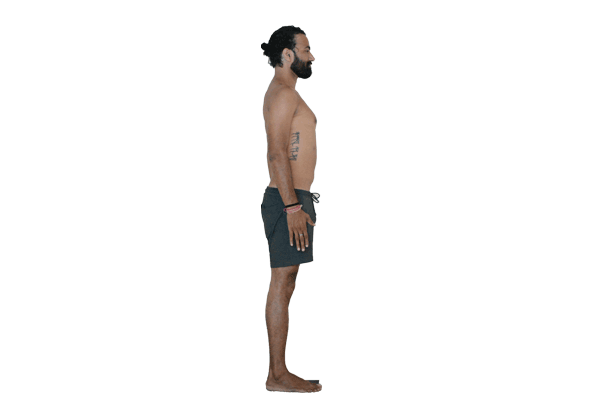
Samasthiti
Movement: Feet engaged with surface awareness, toes stretched & heel pressed, pull knee-cap up, gentle root & abdomen lock, open chest, shoulder depressed, arms to the sides,
2. Urdhva Hastasana
Breath: inhale
Drishti: the thumbs
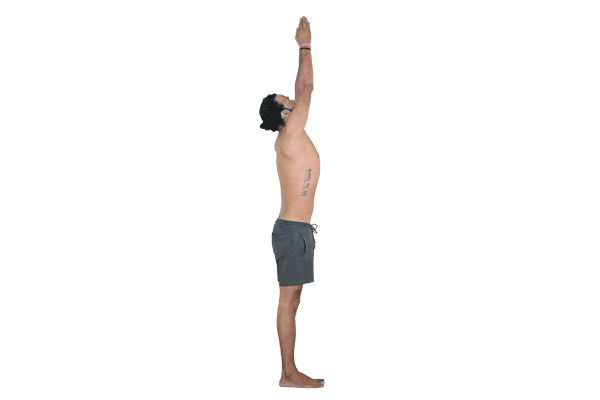
Urdhva Hastasana
Movement: hands up with keeping other alignments as Samasthiti
3. Uttanasana
Breath: exhale
Drishti: the tip of the nose
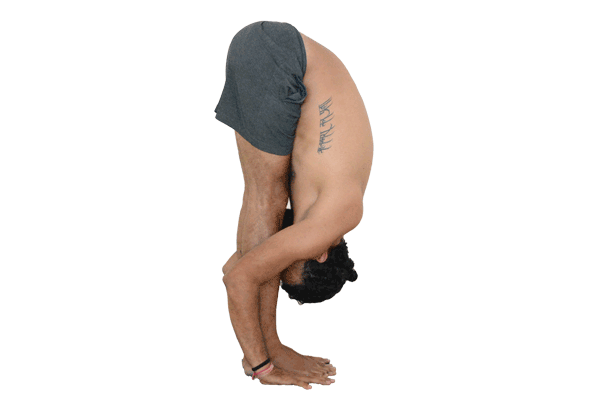
Uttanasana
Movement: bend forward, let gravity pull down trunk, abdomen resting over thighs, shoulder protracted
4. Ardha Uttanasana
Breath: inhale
Drishti: third eye
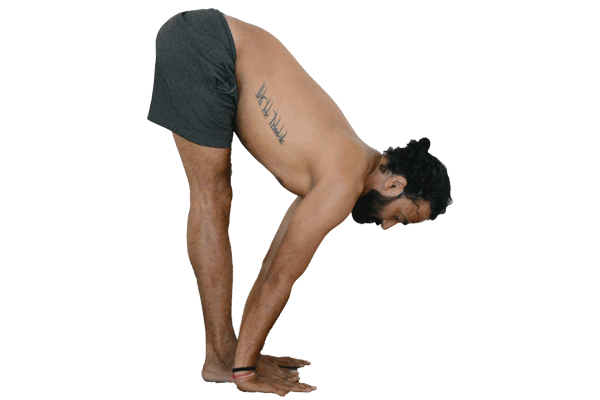
Ardha Uttanasana
Movement: head up, straighten the back & arm, open chest, shoulder protracted.
5. Chaturanga Dandasana
Breath: exhale
Drishti: the tip of the nose
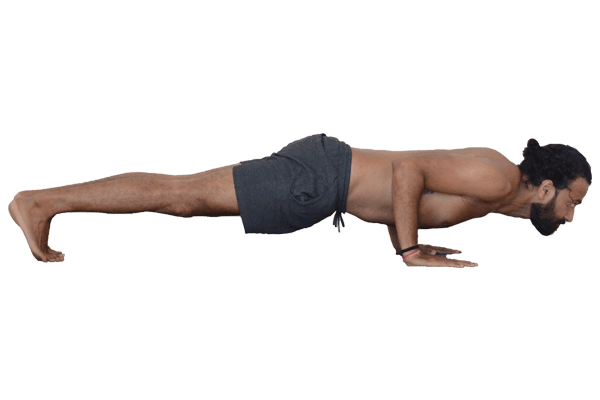
Chaturanga Dandasana
Movement: elbow close to body, finger engaged, shoulder protracted, gentle root lock, keep whole body in one line.
6. Urdhva Mukha Svanasana
Breath: inhale
Drishti: third eye
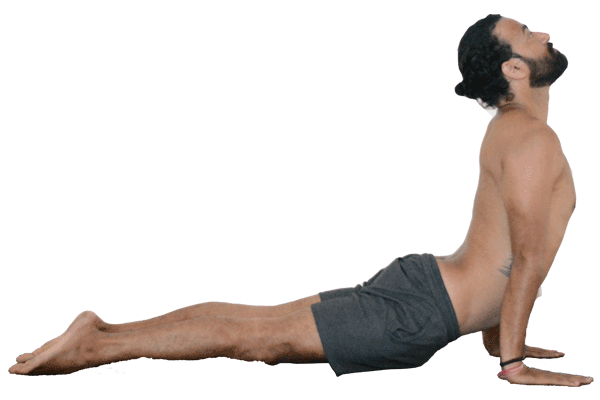
Urdhva Mukha Svanasana
Movement: Depressed shoulder over Wrist, chest forward, thighs & knees off the mat, big toes pressed, gentle root lock.
7. Adho Mukha Svanasana
Breath: Breath: exhale (stay for 5 breaths)
Drishti: Navel or knees
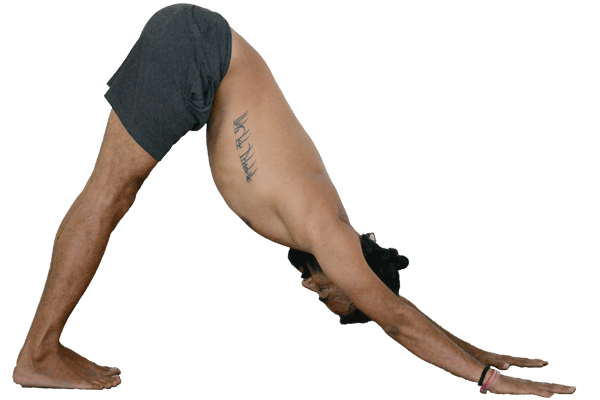
Adho Mukha Svanasana
Movement: Heel gently pressed, lift the hips back, straight spine & legs , Fingers spread & engaged, shoulder protracted.
8. Ardha Uttanasana
Breath: inhale
Drishti: third eye

Ardha Uttanasana
Movement: head up, straighten the back & arm, open chest, shoulder protracted.
9. Uttanasana
Breath: exhale
Drishti: the tip of the nose

Uttanasana
Movement: bend forward, let gravity pull down trunk, abdomen resting over thighs, shoulder protracted
10. Urdhva Hastasana
Breath: inhale
Drishti: the thumbs

Urdhva Hastasana
Movement: hands up with keeping other alignments as Samasthiti
11. Samasthiti
Breath: inhale & exhale
Drishti: the tip of the nose

Samasthiti
Movement: Feet engaged with surface awareness, toes stretched & heel pressed, pull knee-cap up, gentle root & abdomen lock, open chest, shoulder depressed, arms to the sides,
Sun Salutation B
Sun Salutation Series B -This rhythmic grouping of seventeen postures follows Sun Salutation A and builds upon it. You will feel the increased intensity as it challenges the cardiovascular system and muscles overall and continues to prepare you for more practice. Click here for step-by-step instruction.

Surya Namaskar B Devvrat Yoga Sangha
Benefits
Relaxes the mind, strengthens the body, improves blood circulation, increases mental focus, improves organ function, improves posture, helps burn fat, reduces insomnia, improves flexibility, and improves muscle tone.
Closing thoughts
We can approach Surya Namaskar solely as a physical practice or as a spiritual practice. As a spiritual practice, it can help us to connect with all that is as we relax fully into being - into present moment awareness. This is the moment where we can recognize our own divinity as an integral part of the oneness. Either way, each time we practice Surya Namaskar we are rewarded with a more relaxed mind, and revitalised body and for some who begin to practice simply for the physical and health benefits, sometimes may find a new spiritual path open to them.
A special thank you to my teachers at Devvrat Yoga Sangha.

![Surya Namaskar[a] or the Sun Salutation 1 Sun Salutations Devvrat yoga Sangha](https://mindfulsoulcenter.co/wp-content/uploads/2021/07/Devvrat-yoga-sun-salutation-series-a-with-permission-1.png)







